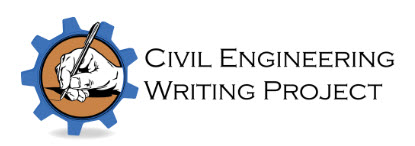The Civil Engineering Writing Project was designed to address a long-standing problem in engineering education: the mismatch between students' writing skills and the demands of writing in the workplace. We analyzed effective writing by civil engineering practioners and compared it with civil engineering students' writing. We used the results of the analyses to design materials that address specific weaknesses found in student writing. We also studied the effectiveness of the new materials. The project has ended, but the materials are still available for use.
Instructors may copy, display, and distribute these materials as they appear here and use them with students. Individuals are welcome to use them for self-study. Other uses of the materials, including making derivatives, are prohibited without written permission from PSU. For permission or questions, contact Susna Conrad at conrads@pdx.edu. All rights not granted here are reserved.
Materials for Courses and Self-Study
-
Language Units (for building judgment about effective language choices)
- Language Unit 1 - Word choices for precision and accuracy - introductory, non-technical
- Language Unit 2 - Word choice, precision, and accuracy in technical information
- Language Unit 3 - Effective sentence structure - simple sentences with one main idea
- Language Unit 4 - Connecting ideas effectively in sentences - complex sentence structure
- Language Unit 5 - Active and passive voice - how to choose what's most effective for the context
- Language Unit 6 - Sequence of information through a document (for resports and tech memos - not proposals)
- Language Unit 7 - Information sequencing in sentences - known-new information structure
- Language Unit 8 - E-mail - professional use of e-mail and special language considerations
- Grammar Lesson 1 - Sentence structure and punctuation: What is a complete sentence? How is it punctuated?
- Grammar Lesson 2 - Verb tense and reporting methods: What verb tense is needed to report data collection and analysis?
- Grammar Lesson 3 - Commas: Where is a comma obligatory? Where should it be omitted? Where is it optional?
- Grammar Lesson 4 - Parallel structure: How do you write grammatical, effective sentences that include lists of items?
- Grammar Lesson 5 - Semi-colons: What is the correct use of semi-colons?
- Grammar Lesson 6 - Using "the" - the definite article: How does the use of "the" differ between notes and formal documents?
- Grammar Lesson 7 - Apostrophes: When do you need an apostrophe? When should you leave it out?
- Grammar Lesson 8 - Figures and tables: What makes visuals effective? How should you label them?
- Grammar Lesson 9 - Proofreading
- Genre Unit 1 - Field Observation Memo (Note: This unit is designed especially for first-year course assignments that require students to visit sites and firms. Additional for Genre Unit 1 - Unannotated Excellent Example, Unannotated Weak Example, Annotated Excellent Example, Annotated Weak Example, and FOM Template
- Genre Unit 2 - Cover Letters and Letters of Transmittal
- Genre Unit 3 - Geotechnical Site Visit Investigation Reports
- Genre Unit 4 - Water Distribution Analysis Report
- Genre Unit 5 - Proposals
- Grammar and Mechanics Lessons (addressing common errors civil engineering students make)
- Genre Units (describing the typical pupose, content, sequencing, and formatting of common text types)
The Civil Engineering Writing Project was funded by the National Science Foundation (Grant No. 083776, May 2009 - Sept. 2011 and Grant No. 1323259, Oct. 2013 - Sept. 2018). It was based in
the Department of Applied Linguistics at Portland State University with a team of collaborators in Civil and Environmental
Engineering at Portland State, Cal Poly Pomona, Howard University, and Lawrence Tech.

